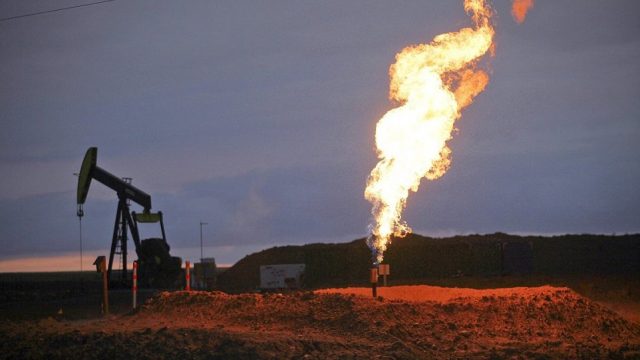Clueless Sierra Club Activist Doesn't Know Facts About Flaring In North Dakota

The problem with environmental activists – at least the political sort who show up the most often in stories about energy development – is that the only thing which will ever satisfy them is a complete halt to fossil fuel energy development.
Case in point, the State of North Dakota has made some very positive strides this year on the very real flaring problem. Since gas is a byproduct of energy development in North Dakota, as opposed to the goal, a lot of it was getting flared off instead of captured as oil production outstripped capture capacity. But the industry and state regulators (who are often unfairly accused of being in the pockets of the industry) have stepped up in a big way and, as I’ve noted previously, deserve some credit on the flaring issue.
But certain left-wing environmental activists aren’t willing to give any credit. Case in point: Wayde Schafer, conservation organizer for the Dacotah Chapter of the Sierra Club, who manages to illustrate how loose a grasp he actually has on the issue.
(On a related note, isn’t it funny how all the environmental activists have begun calling themselves conservationists? It’s a marketing gimmick. Conservationism is a lot more socially acceptable in states like North Dakota than environmentalism, so they’ve rebranded themselves.)
Schafer told April Baumgarten of the Dickinson Press that flaring in the state isn’t actually being reduced because we’re talking about a flaring percentage. The volume of gas being flared can still increase, even as the rate falls, if the overall volume of gas being produced increases as well:
A flaw with the rule is that it talks about percentages instead of volume, Schafer said. North Dakota had 11,892 producing wells in October, but Helms, despite falling oil prices, predicted early August oil companies could drill more than 60,000 wells over the next 20 years. That number could approach 70,000, Schafer added.
“Even if they get down to that 10 percent in the next five years, I would rather have 26 percent of 11,000 wells than 10 percent of 70,000,” Schafer said.
That’s not an unfair point, but if Schafer were anything more than a left-wing political activist bent on hamstringing oil production he’d understand that the volume of gas being flared in North Dakota – the volume, not the rate – has not only plateaued but actually decreased in recent months. Here are the trend lines for gas produced and flared:
This chart illustrates a remarkable achievement. Despite skyrocketing gas production, the oil and gas industry has largely kept up in terms of capture capacity, which is no easy feat. Now they’ve not only caught up but are actually getting ahead of growing production to the point where the actual volume of gas flared is decreasing.
That’s remarkable.
Schafer, it seems, isn’t up to date on the facts about flaring. Which is curious, given that issues like flaring are supposed to be his job.
But, again, people like Schafer aren’t working to find a reasonable balance between energy development and environmental stewardship. People like Schafer are here to roadblock energy development through lawsuits and support for an ever more byzantine regulatory environment.





